NATURAL AGE-RELATED WRINKLES
The largest organ in our body is the skin. Three layers make up the skin: the epidermis, the dermis, and the hypodermis.
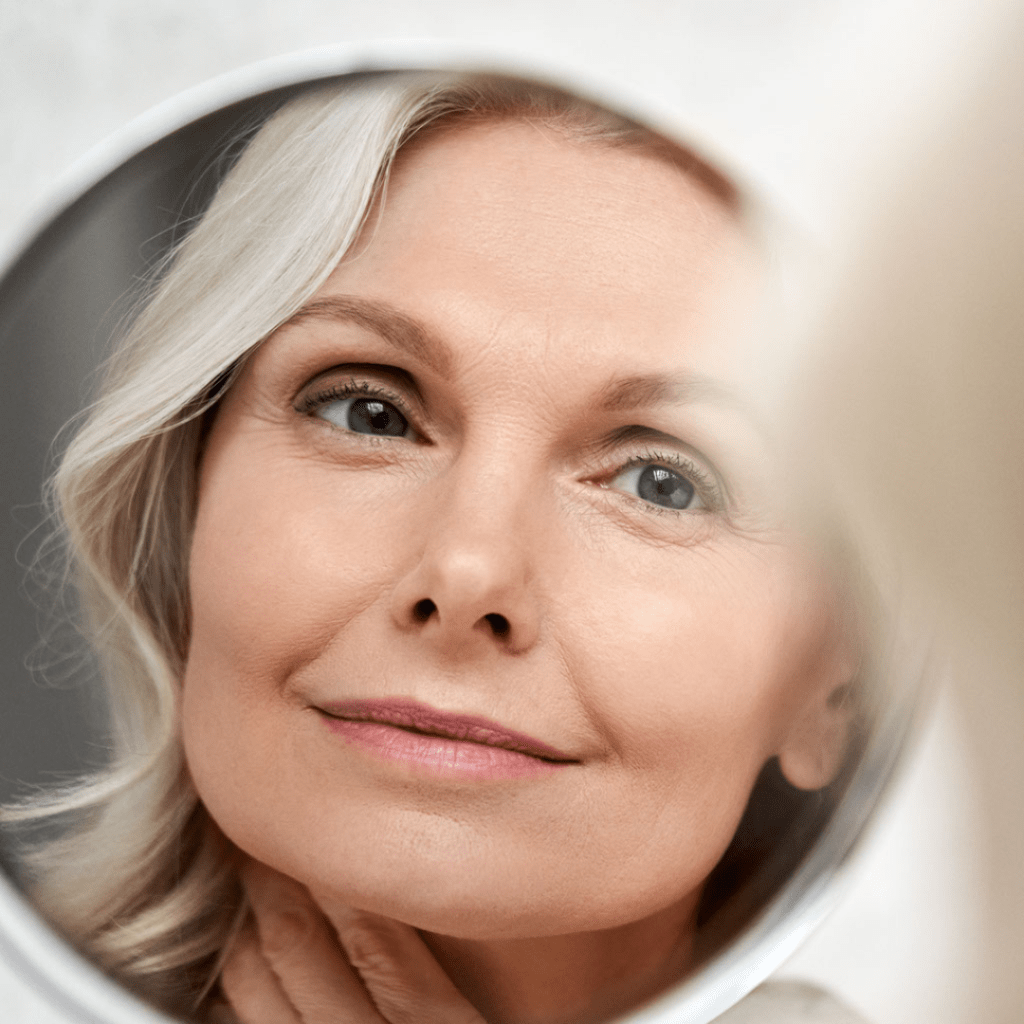
The layer that we see on our body is the epidermis. As we age, this layer gets wrinkles and folds.
The middle layer of the skin, known as the dermis, is the thickest layer. Hair follicles, blood vessels, collagen, and fibroblasts that produce collagen are all found in the dermis.
The bottom layer is hypodermis which primarly contains fat.
The skin gathers a lot of free radicals as we age. The oxidative damage makes the collagen less elastic and also results in decreased collagen synthesis and increased collagen degradation. There is a reduction in fibroblast activity, which affects the production and function of elastin and collagen. These proteins are crucial for elasticity and resistance.
Additionally, the hypodermal layer’s fat shrinks. The epidermis’s folds and creases become more obvious as a result.
PREMATURE AGING:
Premature wrinkles can develop when collagen degradation starts early in life. Ageing prematurely has been associated with six main factors that are modifiable through lifestyle changes.
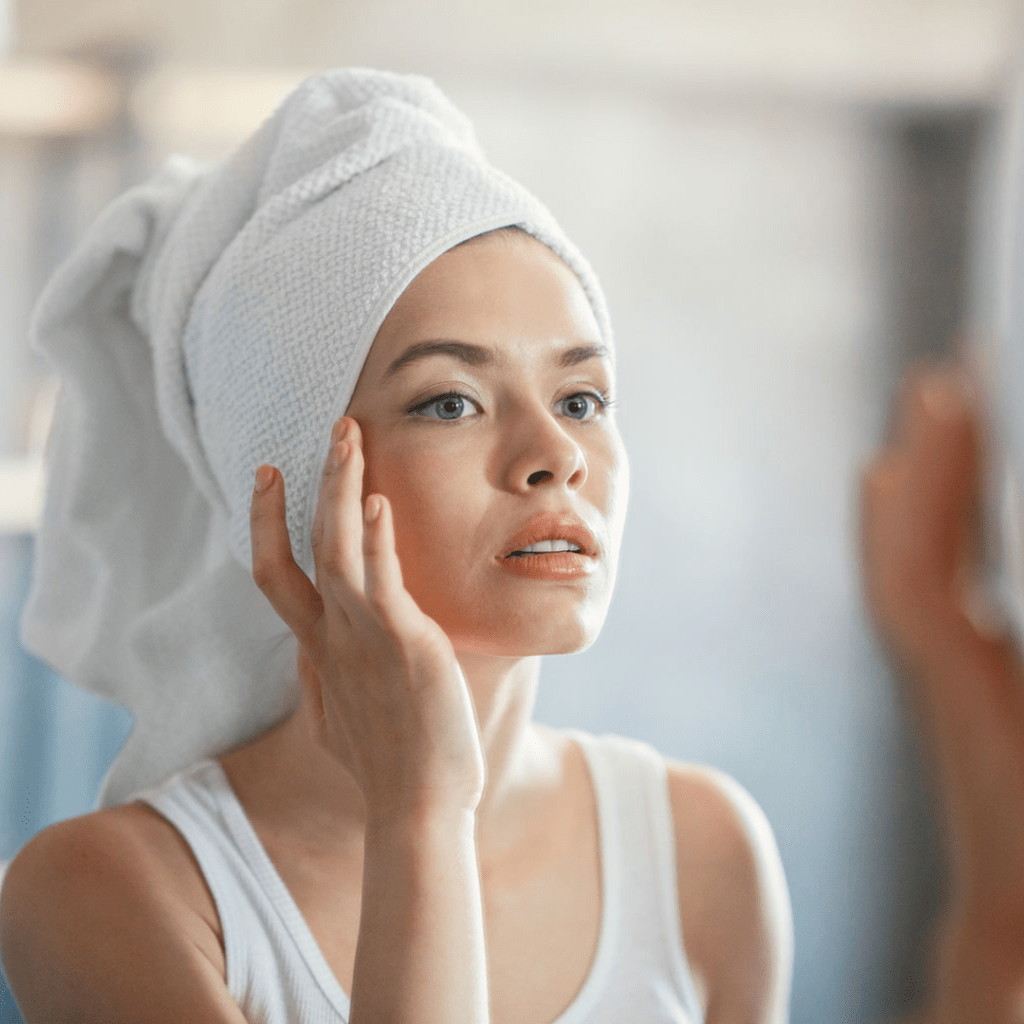
- Using facial expressions excessively
- Smoking
- Stress
- Poor dietary decisions
- Lack of sleep
- UV rays and pollution
To prevent the onset of premature ageing, it is essential to take care of your skin and body.
1. Skin carE:
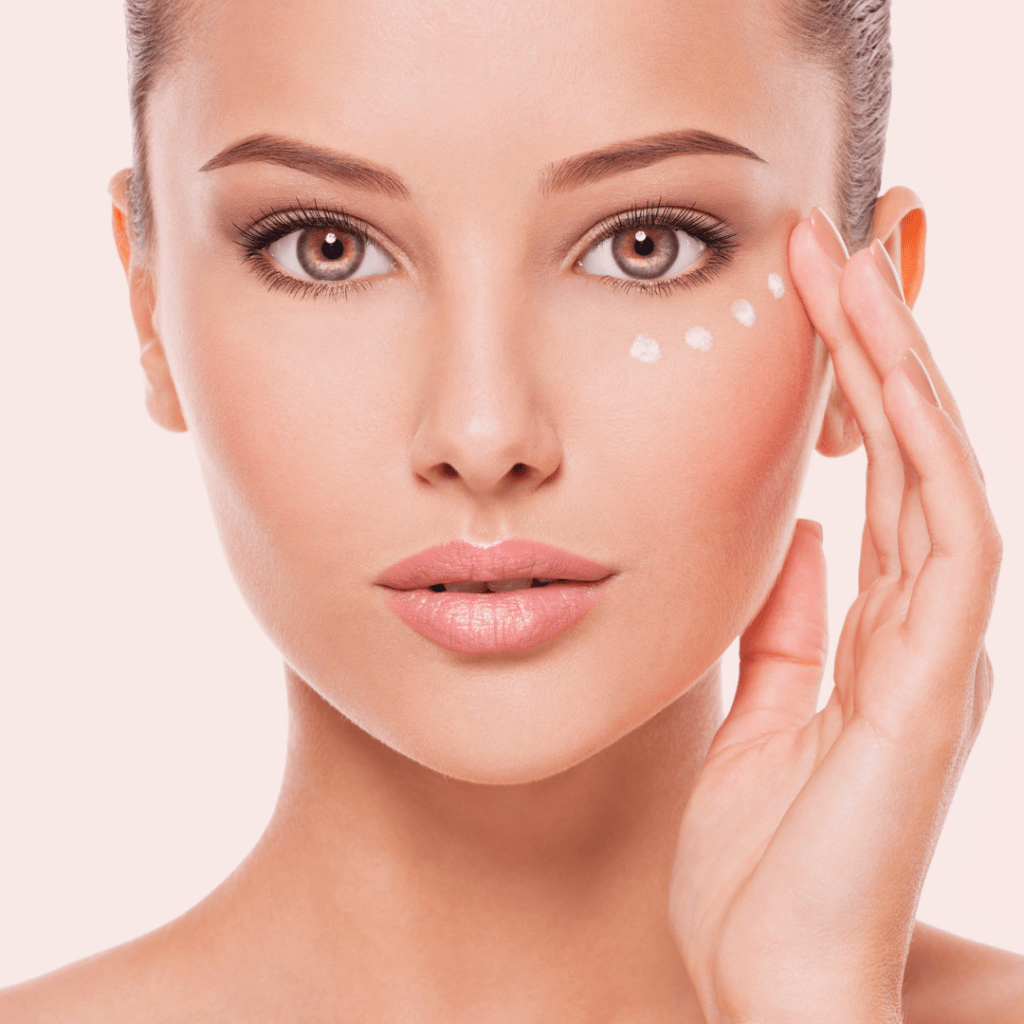
The first thing you should do is establish a good skin care regimen, especially after turning 30.
Always take off your makeup before bed and wash your face with a mild cleanser when you get home.
There is no one universally effective skin care regimen. To find the best skin care regimen for their skin, one must first understand their skin type.
If one can, one should use retinol, ascorbic acid, hyaluronic acid, collagen, and peptides-containing products.
2. Diet:
A healthy diet should include fresh fruits, vegetables, and foods high in antioxidants.
3. Sun protection:

It’s crucial to shield oneself from the sun’s harmful UV rays, which can cause skin cancer, premature ageing, and even AMD.
Wear broad-brimmed hats, SPF sunscreen, and large sunglasses whenever you go outside.
4. Quit smoking:
Additionally, smoking leads to vasoconstriction, which lowers the oxygen supply to the skin causing appearance of wrinkles.
5. Reduce stress:

One of the main contributors to wrinkles is stress. Stress causes the body to be out of balance and dissonance, which results in many undesirable changes, wrinkles being one of them.
For a better and less stressful life, take up a hobby, exercise, eat clean, and practise meditation.
6. Exercise:
Regular exercise will help you feel and look younger. This even has a scientific foundation.
Studies have demonstrated that exercise encourages the generation of stem cells. A stem cell or progenitor cell can become a brain cell, a muscle cell, and a blood cell through specialisation.
As we age, our body’s ability to produce stem cells declines.
Daily exercise and a healthy diet promote the growth of new stem cells, which aid in the regeneration of damaged cells and younger-looking skin.
MEDICAL PROCEDURES TO TREAT WRINKLES:
A common cosmetic treatment for wrinkles is botulinum toxin injections and dermal fillers.
It’s crucial for consumers to do their research and visit a licenced, experienced practitioner who is familiar with the periorbital anatomy, uses proper injection techniques, and can inform them of potential complications.
Botox and fillers are typically used around the eyes to treat the following muscles:
- Frontalis muscle: responsible for forehead wrinkles
- Glabellar muscle complex: Causing frown lines
- Orbicularis oculi: Eye muscle surrounding the eyes responsible for under eye wrinkles and smile lines or crow feet that appear on the side of the eyes when we smile.
BOTOX
Produced by the bacterium Clostridium botulinum, botulinum toxin (Botox) is a neurotoxin. The use of Botox is both cosmetic and medical, treating conditions like lichen simplex, hyperhidrosis, blepharospasm, eye twitching, as well as other facial tics.
HOW DOES BOTOX WORK?
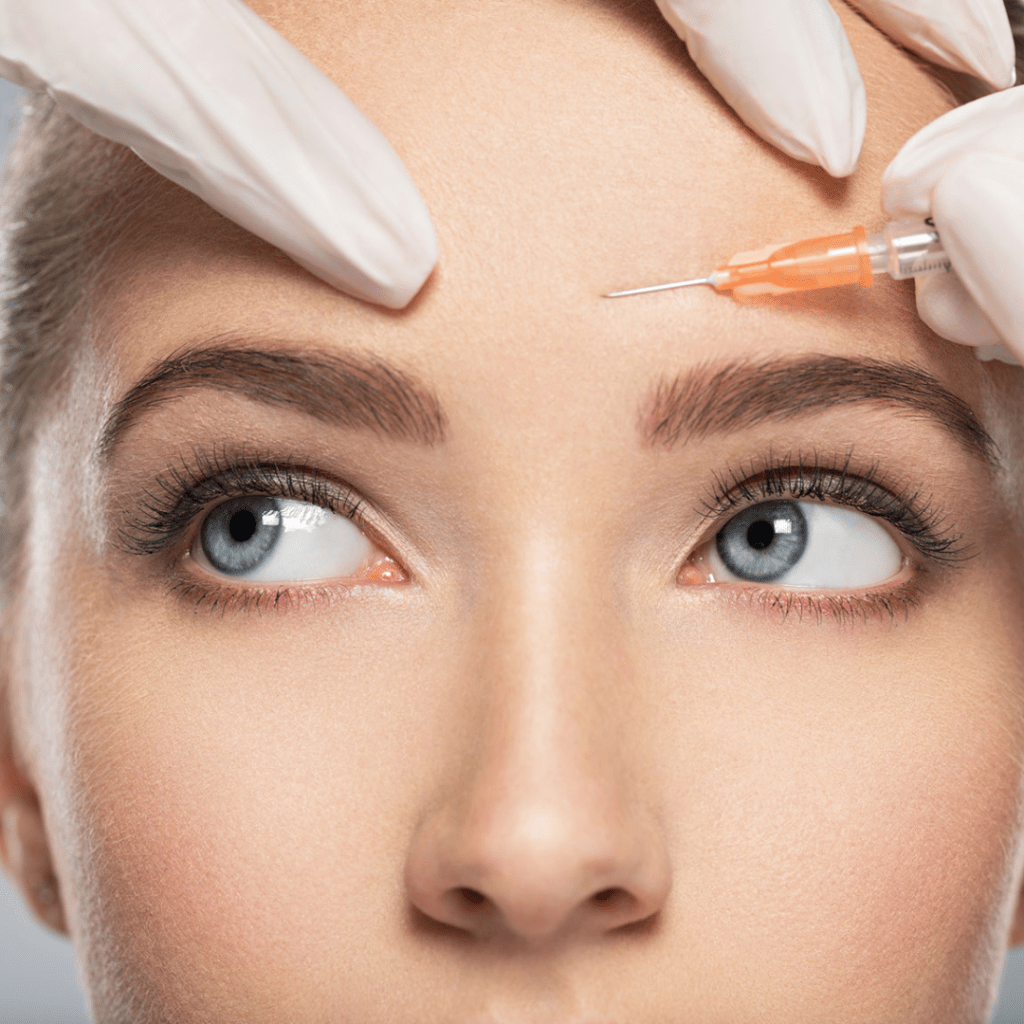
An injection of botox, which is a neurotoxin, paralyzes the local muscle.
Using Botox reduces the appearance of wrinkles and lines in the face by inhibiting an enzyme in the body called acetylcholine. This prevents the transmission of signals between nerve endings.
WHAT IS THE DURATION OF THE EFFECT?
The first to fourth days after injection are when Botox’s clinical effects are visible, and they peak for one to four weeks before fading away after three to four months.
For longer-lasting effects, Botox should be repeated once every three to six months for a year.
WHAT ARE THE SIDE EFFECTS?
Botox is an effective and secure medication for reducing facial wrinkles. But like any other procedure, this one has risks, particularly when carried out by untrained hands.
Both Botox and fillers require skin testing to determine whether there will be an allergic reaction.
In order to prevent bleeding issues, blood thinners must be discontinued with a doctor’s permission.
Bruises are the most common side effect, which can be reduced by using ice before and after injections.
Botox should only be injected in low doses. Deeper penetrations and high doses can result in one of the following
1. Double vision:
Due to the medication’s potential to penetrate eye muscles like the lateral rectus or inferior oblique when used to treat crow’s feet or under-eye wrinkles respectively, double vision may result.
2. Ptosis or drooping lids:
Botox accidentally injected into the muscle that retracts the eyelid results in eyelid drooping.
3. Ectropion:
It is an outward turning of the lower eyelid caused by the faulty injection procedure in the undereye area for wrinkles correction.
This causes an incomplete eyelid closure, which exposes the cornea and causes dryness. Watering also ensues due to improper tear pump function, causing tears to roll out instead of staying in the margin.
4. Frontal headache:
Especially after receiving frontalis muscle botox for forehead wrinkles, headaches may occur.
MANAGEMENT OF COMPLICATIONS
The effects of botulinum toxin injections on the affected muscles usually result in short-term complications which wears off after 3-6 months. It usually doesn’t require any treatment.
FILLERS
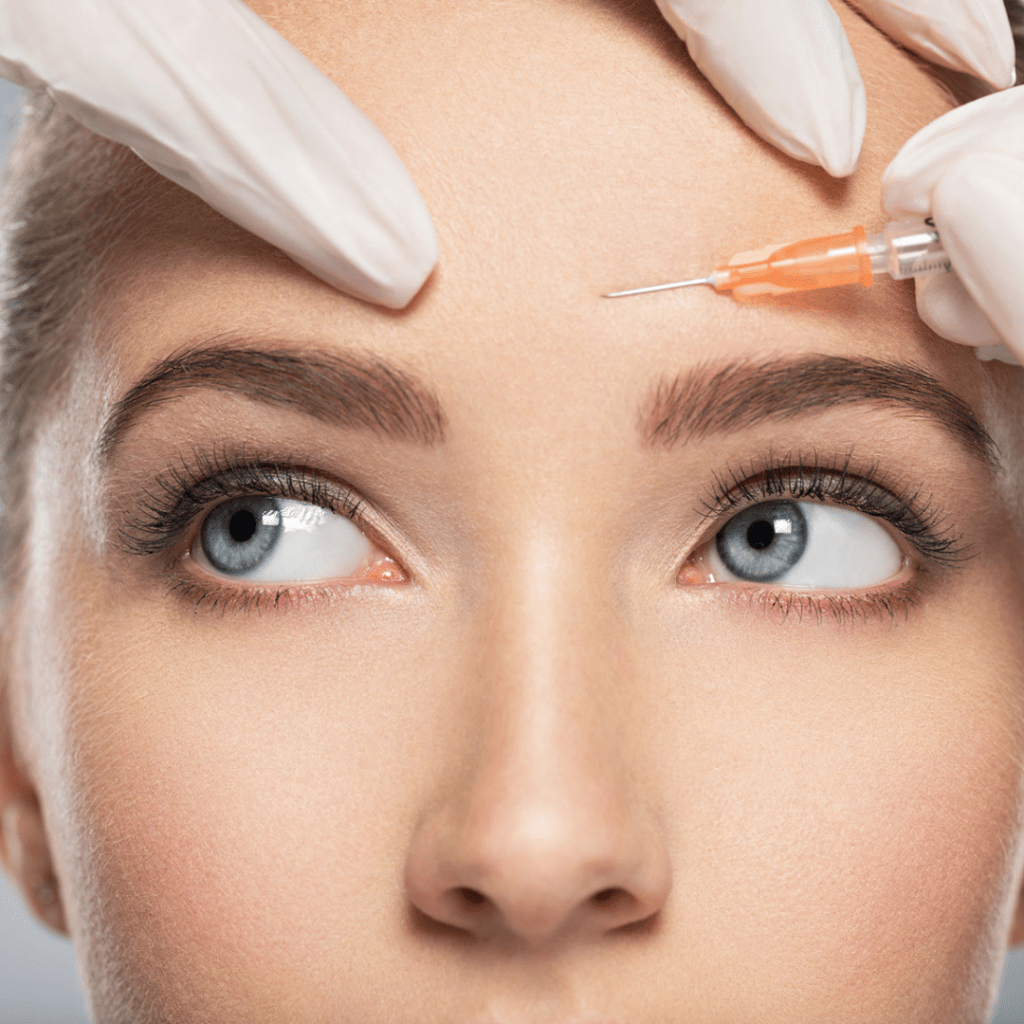
There are many different types of fillers, but the most popular are temporary, reversible dermal fillers made of hyaluronic acid (HA).
HA is a naturally occurring substance found in our joint space. These are viscous and are used to add volume to the area where they are injected. Those who have tear troughs will primarily benefit from this.
Age-related changes in the skin under the eyes, eye depression, and the appearance of tear troughs lead to pronounced dark circles and hollows beneath the eyes.
Since HA is a humectant or hydrophil, it draws in and holds onto water. HA is injected in the skin, it creates the volume in the area that fills up the space.
The shadows caused by the tear troughs that result in the dark circles vanish when fillers are injected at particular spots in the hollow space between the eyelid and the cheek.
COMPLICATIONS:
Injections of HA are used extensively to treat the hollowness under the eyes. The only complications associated with this area are minor bleeding and bruising. It may even result in infection if not carried out in a sterile setting.
People are advised against wearing any makeup within first few hours of receiving fillers till the injection site heals. This is because studies have shown that it can seep into the skin through the injection site.
The most feared and least common side effect of injecting dermal fillers is vision impairment.
The incidence of this complication has been the subject of numerous studies, but the results are not consistent.
According to few studies, some patients who received HA filler experienced partial blindness, and some even experienced irreversible complete blindness as a result of injection into the artery supplying the eye, which led to retinal artery occlusion and, ultimately, blindness.
Almost all of the cases were unilateral, with the onset of visual symptoms and signs occurring shortly after the injection. The most frequently involved areas were the forehead, glabella, and nose.
This indicates that the dermal filler for the under-eye hollow is still generally safe.
MANAGEMENT OF COMPLICATIONS
Hyaluronidase should be available to the doctor at all times because it is essential in the event of complications.
The hyaluronidase enzyme depolymerizes hyaluronic acid, resulting in its disintegration.
When HA filler is accidentally injected and results in lumps, nodules, and artery obstruction, hyaluronidase is used to treat the problem.
QUICK SUMMARY:
Wrinkles are a natural feature of ageing. Even though we can slow it down, nobody has yet discovered a way to stop it. However, if wrinkles start to emerge far earlier than they should, it’s time to consider your lifestyle choices.
Skin care, a nutritious diet, exercise, meditation, avoiding alcohol and tobacco, and getting a good night’s sleep are all factors in having skin that looks healthy.
Botox and fillers are modern alternatives for saying goodbye to wrinkles and fine lines.
Make an informed decision, conduct thorough research, and have such treatments performed only by a qualified professional.
